Multifamily Housing - More Popular Than Ever
Learning Objectives:
- Investigate the beneficial wellness attributes to people of incorporating outdoor living spaces using pedestal decks in multifamily buildings.
- Assess options for interior design that enhance wellness, design quality, and affordability in multifamily buildings.
- Explain the significance of properly used and specified fire-retardant-treated wood (FRTW) for structural uses that address the safety of people and the protection of property.
- Determine the options to incorporate in-wall plumbing fixtures to enhance cleanliness, health, and compliance with accessibility requirements in living units.
Credits:
This course is approved as a Structured Course
This course can be self-reported to the AANB, as per their CE Guidelines
Approved for structured learning
Approved for Core Learning
This course can be self-reported to the NLAA
Course may qualify for Learning Hours with NWTAA
Course eligible for OAA Learning Hours
This course is approved as a core course
This course can be self-reported for Learning Units to the Architectural Institute of British Columbia
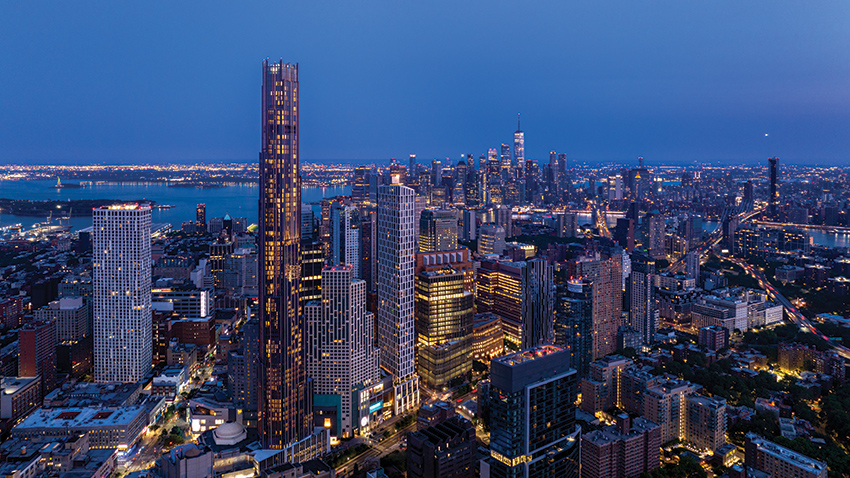
Photo: Max Tuohey; courtesy of JDS Development
Multifamily housing continues to be in high demand in many settings around the world including New York City where the Brooklyn Tower has been completed – designed by SHoP Architects for JDS Development.
Numerous publications have reported that urbanism, just like the human population, is on the rise all around the world. With that trend comes a denser built environment based on an urban fabric that promotes free circulation and multifamily, multistory housing. Even in predominantly suburban and rural settings, pockets of multifamily housing are found to create village-like atmospheres and walkable communities. In virtually all cases, good multifamily housing design includes comfortable, up-to-date living units combined with appealing common amenities with sustainable and green building design seen as a top priority for residents–and for sales efforts. In numerous housing markets, multifamily housing, such as condominiums or townhouses, is also seen as an affordable option for many with the purchase price of single-family housing out of reach for many first-time home buyers. With all of these considerations as a background, this course looks at some of the techniques, approaches, and latest product offerings available to satisfy some of these varied design criteria for successful multifamily housing projects.
DESIGNING OUTDOOR SPACES
While the tendency is to think first of the building when designing a multifamily project, the reality is that outdoor spaces are an important, and valuable part of any living arrangement. Such outdoor areas can be manifest in a variety of design features such as balconies, rooftops, terraces, and on-grade designs. These outdoor spaces allow residents and guests to enjoy the use of either an extension of indoor living areas or a separate, public outdoor amenity space. As such, they can provide users with desirable features such as outdoor kitchens, fire pits, bars, living areas, gardens, green roofs, pool areas, seating areas for reading, recreation spaces, and other desired uses.

Photos: John Cole; Courtesy of Bison Innovative Products
Standard outdoor deck components can be customized and used creatively to create sustainable and wellness-focused outdoor amenity spaces in multifamily buildings as shown here at the Reed Row Apartments in Washington, D.C., by R2L:Architects.Such outdoor amenities are not only appealing and marketable to prospective residents, but they can also offer considerable benefits to the health and wellness of all who experience the natural elements of sun, wind, and vegetation. Rooftop decks help to boost morale and strengthen relationships within the community of residents in a multifamily building. They can also incorporate natural elements such as planters or vegetative materials and thus create biophilic design opportunities. Native plants and natural building materials offer occupants a visual and material connection with nature. Green spaces benefit occupants’ health and wellness by enabling programmatic flexibility; these spaces can be used for recreation, refuge, and/or restoration.
Raised Modular Decks
The means to create appealing outdoor spaces is often realized by using a raised modular deck system. Such modular systems are versatile and give architects and others the design flexibility to create unique and beautiful rooftop environments and outdoor spaces. By utilizing adjustable height pedestals to support the deck, uneven or sloped surfaces can be easily accommodated. Architects can include a mix of pavers and surface materials including wood, stone, structural porcelain, crushed rock, grating, artificial turf, concrete, and planter cubes and benches, to create unique, custom looks. Versatile, adjustable pedestal deck systems can be utilized over any structural surface–on bare structural decks, rooftop decks, roof membranes, green roofs, terraces, compacted grade, pavement, pool surrounds, or in water features. Through the modular design of surface materials and accessories, designers can create an abundance of different design visions without the need for custom or costly materials.
Sustainability Features
Some manufacturers are dedicated to decreasing their impact on the environment by designing products that are part of a more circular economic system, such as using recycled and recyclable content. Similarly, wood tiles can be crafted from premium-grade remnants and harvested in an environmentally responsible method designed to preserve the economic viability of rainforest hardwoods. Wood tiles can be associated with governing groups such as the Forest Stewardship Council (FSC) to ensure they address quality standards and best practices of wood acquisition and plantation farming.
Once installed, pedestal decks can help to reduce a building’s carbon footprint through a reduction in a roof’s ambient temperature, potential for green space, rainwater collection initiatives, and/or reduced need for roof replacement). A raised, air-permeable, open-grid pavement system can help reduce the cooling loads of the building and facilitate water drainage. Incorporating a pedestal deck system can also provide pedestrian access to green roofs.
Modular deck systems can contribute to well-known sustainability rating systems including LEED, SITES, WELL, and other green building certification systems. Incorporating outdoor raised deck areas in multifamily projects provides multiple opportunities to create more sustainable and healthier living environments.
FIRE SAFETY
Fire safety has long been a primary concern in all multifamily properties. While property fires continue to happen across all building types, one-or-two-family dwellings annually account for the largest number of fires followed next by apartment or multifamily dwellings. Of significance, when multifamily dwellings burn, they often impact more people and more households than single-family homes and lead the way in injuries and fatalities. This has been exacerbated by the recent growth in wildfires which has impacted entire communities. As such, many localities are adopting Wildland-Urban Interface (WUI) codes that require greater fire resistance in residential construction of all types in order to provide a larger time frame for people to escape fires. In all cases, the choice of materials used to achieve adequate or required fire resistance becomes a significant point of design and specifications.
One- and two-family construction is routinely based on wood framing and sheathing, but increasingly, so is multifamily housing. This is due to several factors. First, it is often the most economical choice that is easy to work with using well-known carpentry tools and methods. Second, wood is still one of the most environmentally friendly and energy/carbon-saving materials in construction. This has prompted the growth of multifamily buildings using wood structural systems and even mixed-use buildings with concrete “podiums” for the lower level(s) and wood-constructed dwelling units above. Finally, updates to the International Building Code (IBC) have recognized that wood members with larger mass or with fire-retardant treatment can be as safe or even safer than steel framing, which can lose its integrity during fires.
Designing with Fire-Retardant Wood
In light of all of the above, fire-retardant pressure-treated wood (FRTW) in the form of dimension lumber and sheathing are now readily available which are code-compliant solutions for exterior walls and roofing. In multifamily construction, it can also be used for separation between units in some cases. More specifically, FRTW is wood impregnated with chemicals during manufacture that, has been tested under ASTM E84/UL 723 “Standard Test Method for Surface Burning Characteristics of Building Materials.” In order to be code acceptable, the tested product must have a flame spread index of 25 or less and meet a Class A rating of 10 minutes plus no evidence of significant progressive combustion when the test is continued for an additional 20 minutes. While still considered a combustible material, code-acceptable FRTW does not support combustion, and its burning rate is limited when flame is applied.
The greatest advantage to using this type of product is found in the construction of mid-height multistory buildings such as apartment buildings built of the code-defined Type III construction. Type III-A includes exterior walls that carry a 2-hour rating with combustible materials allowed on the interior, but 1-hour rated floor. Type III-B is almost the same as III-A, but floors and roofs are not required to be fire resistant. FRTW is also permitted in some parts of Type I and II construction (often used in high-rise buildings) in certain locations as permitted in the IBC. In some jurisdictions, there is growing interest in protecting against wildfires by using FRTW in other building types as well. That means it could apply to Type IV construction for exterior walls and roofs and possibly even Type V if that were to be adopted.
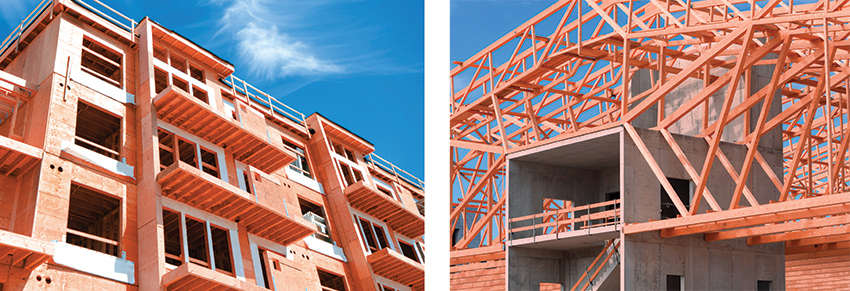
Photos courtesy of ProWood
Fire-retardant pressure-treated wood (FRTW) is recognized as a code-acceptable option for framing walls and roofs for many multifamily buildings.
While this is all good news for those who design, construct, or own multifamily buildings, it must be noted that the treatment process can affect the wood. Depending on the wood species (spruce, pine, fir, etc.), the type of product (stud, joist, plywood, beam), and its application (wall, floor, roof), the structural strength originally associated with the untreated wood is reduced somewhat when treated with a fire retardant. Therefore, the FRTW manufacturer is required to provide strength adjustments based on the intended use of the wood, which must be factored into the structural design of the building. In practical terms, that may mean that FRTW plywood is approximately 1/8 inch thicker than its untreated counterpart. Dimensional lumber may or may not be impacted enough to change any lumber sizing during design but is readily calculable.
Notice
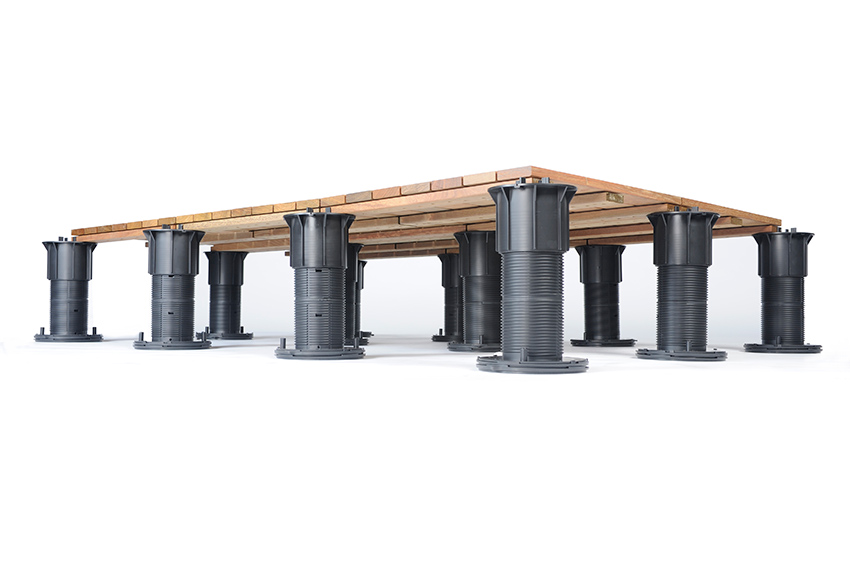
www.bisonip.com
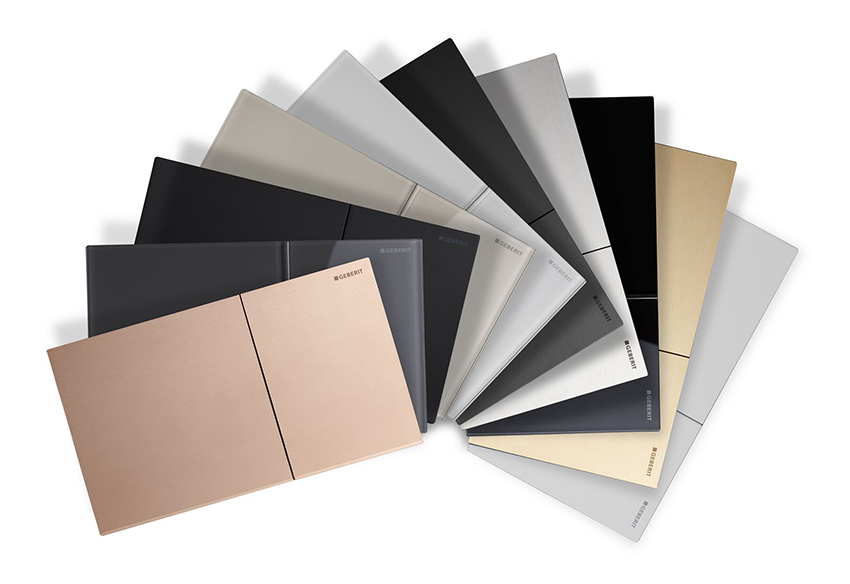
www.geberit.us

www.meekmirrors.com
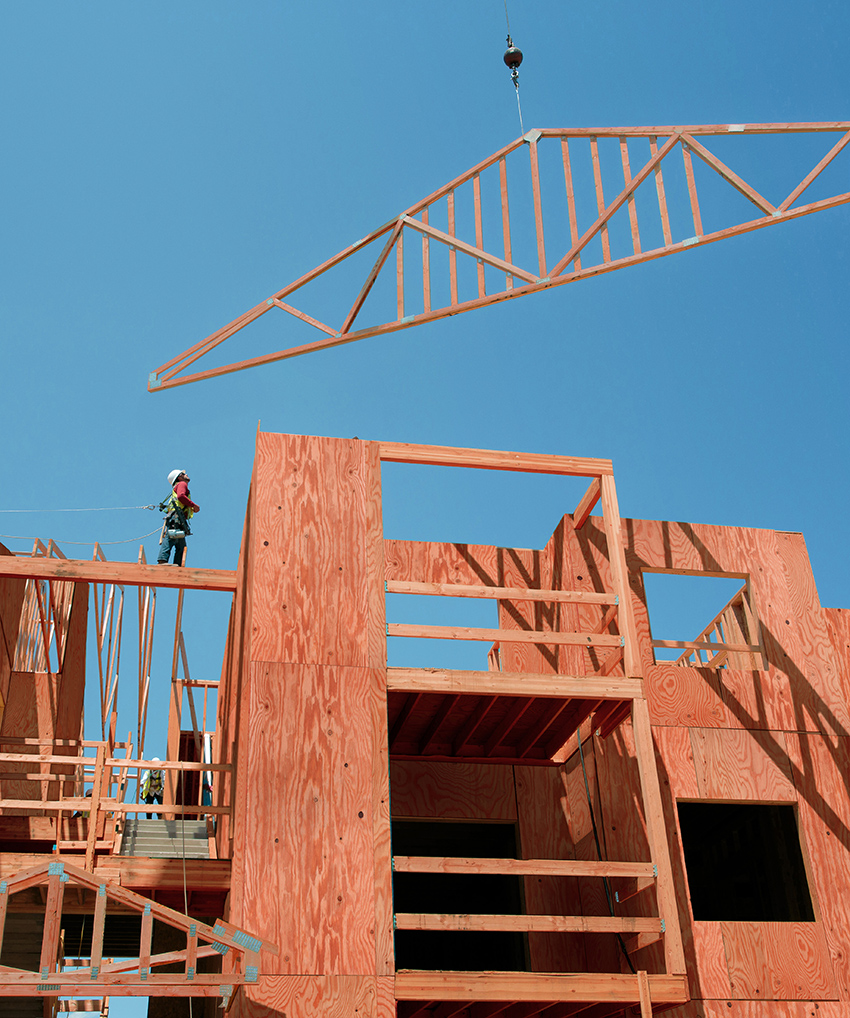
www.prowoodlumber.com

















